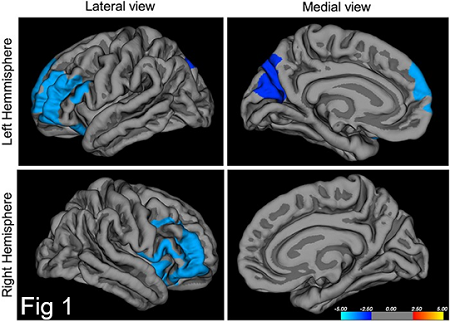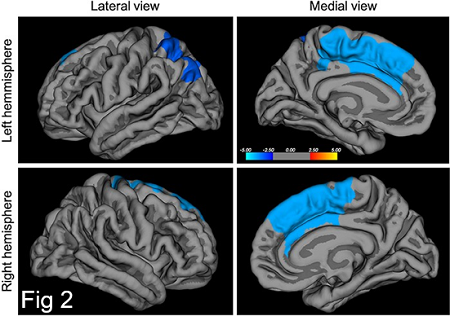Most mental health problems appear during adolescence. During this period, many psychiatric diagnoses are made, ranging from mood disorders such as depression to pathologies such as schizophrenia or obsessive compulsive disorder (OCD). However, the reasons for this vulnerability in adolescence remain poorly understood. The lack of information on how the brain evolves at this time of life could explain these gaps. Recent brain imaging studies have shown that the brain continues to mature and develop beyond childhood into the 20s and 30s. These changes, which are greater in some areas of the brain than in others, particularly those that house higher cognitive functions such as language or consciousness, are directly related to the evolution of mental health.
In this study, researchers used data from an open-access developmental cohort, the Healthy Brain Network (HBN), to analyze associations between cortical surface markers and parent- and self-reported irritability and anxiety scores (irritability and anxiety are two symptoms associated with a higher risk of developing mood disorders in adulthood). The scientists isolated a sample of 718 subjects for whom the quality of the MRI images acquired in HBN was considered satisfactory and from which cortical thickness, cortical area and local gyrification index (formation of characteristic folds in the cerebral cortex) were measured. These three markers of brain maturation were then compared with parental reports of irritability and anxiety. The researchers found that, in 658 youths with a mean age of 11.6 years, parental reports of irritability were associated with a decrease in the area of the bilateral prefrontal cortex and precuneus (an area at the back of our brain, on the medial side of the parietal lobe of the cerebral cortex). Parental reports of anxiety were associated with a decrease in the local gyrification index in the anterior cingulate cortex and dorsomedial prefrontal cortex.

Figure 1 : Areas of significant correlation between children's parent-rated irritability and cortical area (especially in the prefrontal cortex and precuneus).

Figure 2 : Areas of significant correlation between children's anxiety (reported by parents) and local gyrification (particularly in the cingulate gyrus)
Copyright © 2021 Piguet, Mihailov, Grigis, Laidi, Duchesnay, Houenou.
Front. Psychiatry, September 2021
These results are consistent with current models of the maturation of the emotion regulation network. They show anatomical changes in dysfunctional regions in children at risk for mood disorders.
Contact : Josselin Houenou (josselin.houenou@cea.fr)
Healthy Brain Network (HBN), a cohort initiated in 2015 in New York City, is one of the largest and most comprehensive neuroscience datasets dedicated to child and adolescent mental health. It will ultimately aggregate data from more than 10,000 subjects between the ages of 5 and 21 for whom parents were concerned about potential psychiatric problems. https://healthybrainnetwork.org/